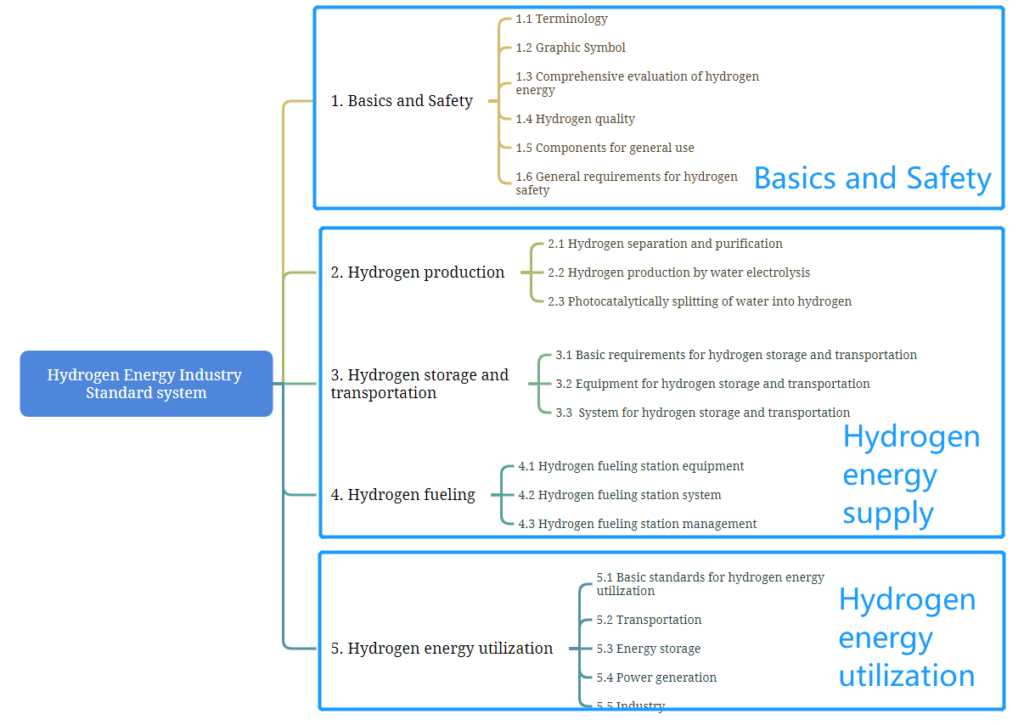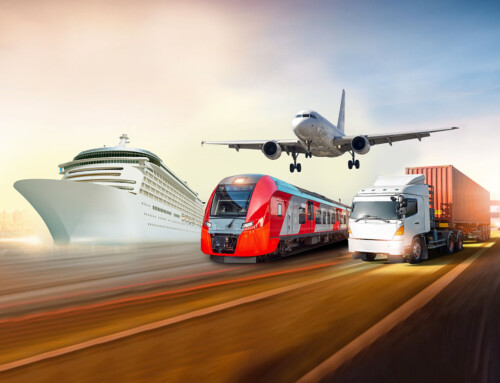On 19 July 2023, the Standardization Administration of China, in collaboration with five other ministerial departments, jointly released the Guidelines for Establishing the Standard System for the Hydrogen Energy Industry (hereinafter referred to as the Guidelines). The Guidelines encompass six sections: general requirements, rationale for the standard system, the standard system, key tasks, implementation provisions, and a list of hydrogen-related standards. As per the Guidelines, the standard system is presented as a layered tree diagram, progressing from basics and safety, to hydrogen energy supply and hydrogen utilization (figure 1). This structure underscores China’s determination to meet the needs of the market while fostering the development of the hydrogen industry. Specifically, the very first key task outlined is the completion of urgently-needed standardization projects, such as testing methods for hydrogen fuel quality, testing methods for the water electrolysis system used in hydrogen production, and general requirements for hydrogen fueling stations, among others.

Figure 1: Standard System for the Hydrogen Energy Industry
Essentially, the Guidelines can be viewed as a three-year action plan, aiming to develop over 30 national and sector standards by 2025 in support of hydrogen production, storage, transportation, and utilization. The primary focus is on the testing of hydrogen quality, hydrogen safety, renewable hydrogen production by water electrolysis, vessels for storage of high pressure hydrogen, on-board hydrogen storage cylinders, equipment for hydrogen liquefaction, liquid hydrogen vessel, hydrogen energy pipeline, hydrogen fueling station, fueling agreement, fuel cells and fuel cell vehicles.
Throughout this process, the Guidelines encourage the development of standard development, especially association standards, and active participation in international standardization activities and exchanges. Specifically:
- According to the Guidelines, a total of 158 standards (national and sector) and standardization projects have been identified: among these, 19 are standard projects not yet under development, while around 50% of the projects involve the hydrogen transportation system.
- The Guidelines strongly encourage experts from leading enterprises, research centers and universities to engage in international hydrogen-related standardization activities and exchanges within the ISO and IEC frameworks. The goal is to convert more than 5 international standards into Chinese standards, and to proactively propose 3 or more international standard projects.
Overall, the Guidelines align with the long-term plan for standardization and for the development of the hydrogen industry. Furthermore, the inclusion of specific targets for international standard projects underscores China’s determination to expand its influence within the international standardization community, thus contributing to the development of international standards.




